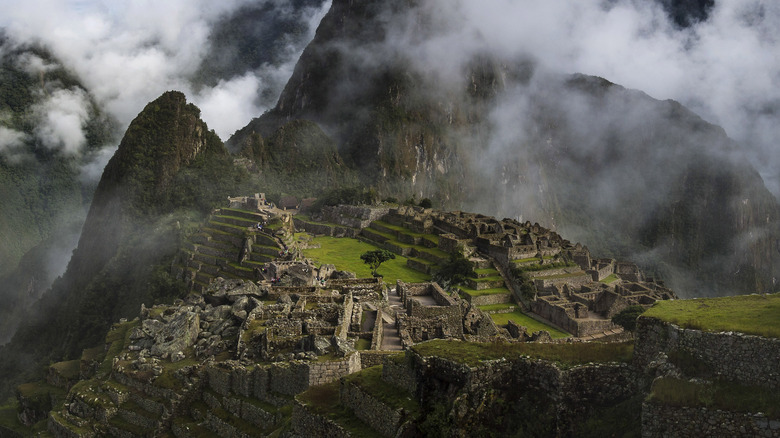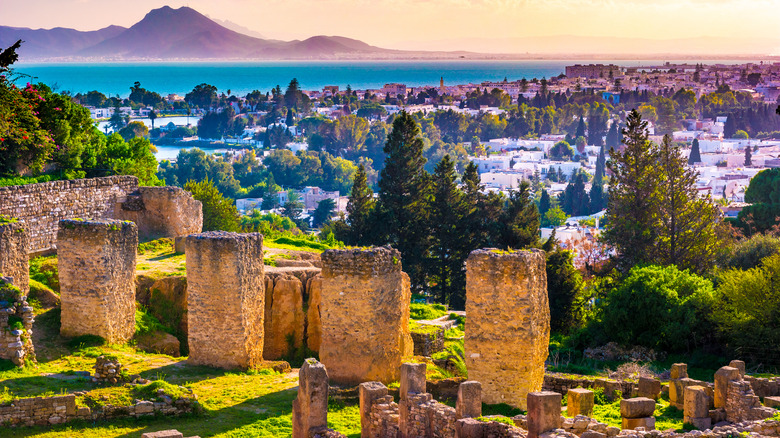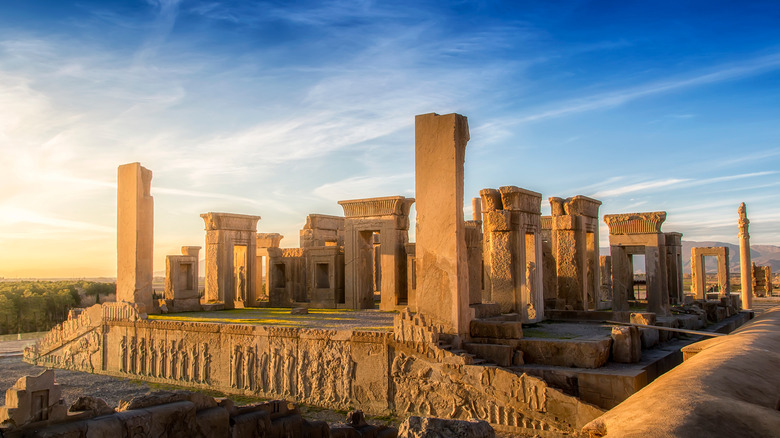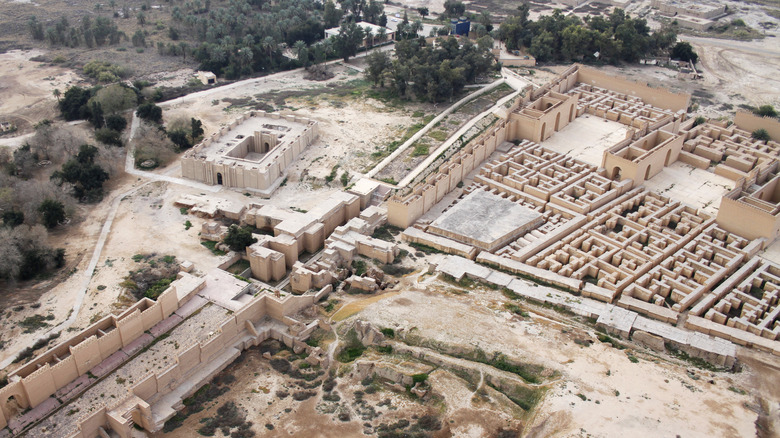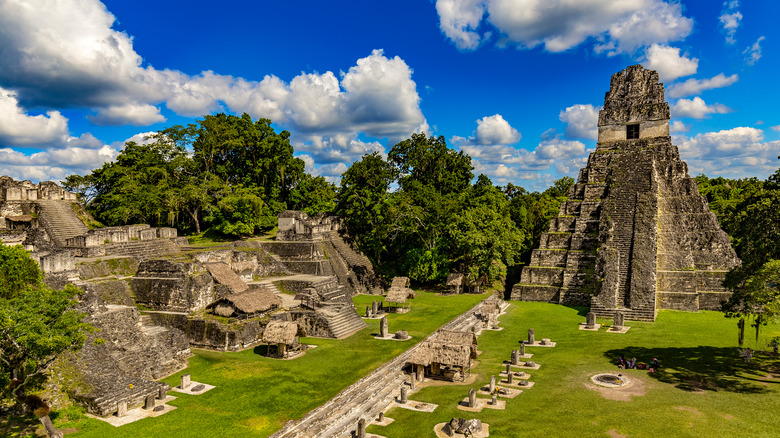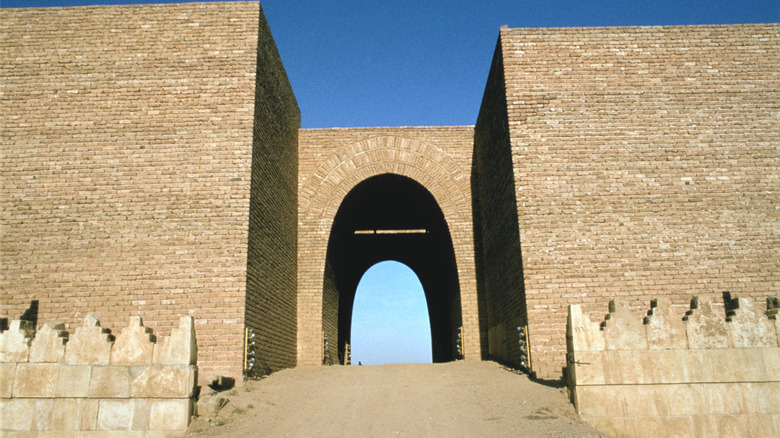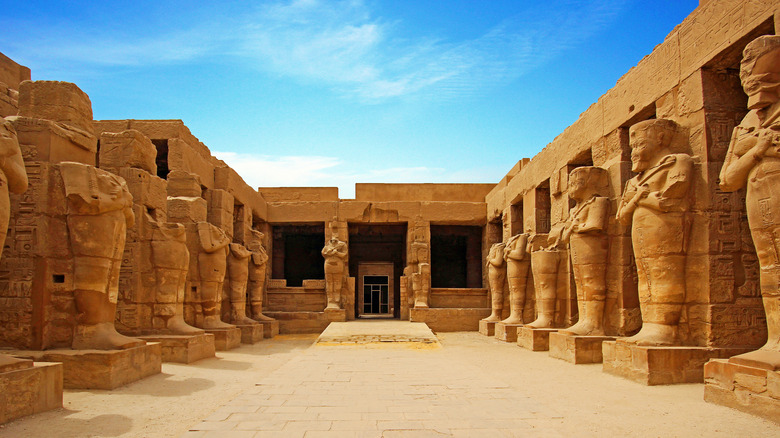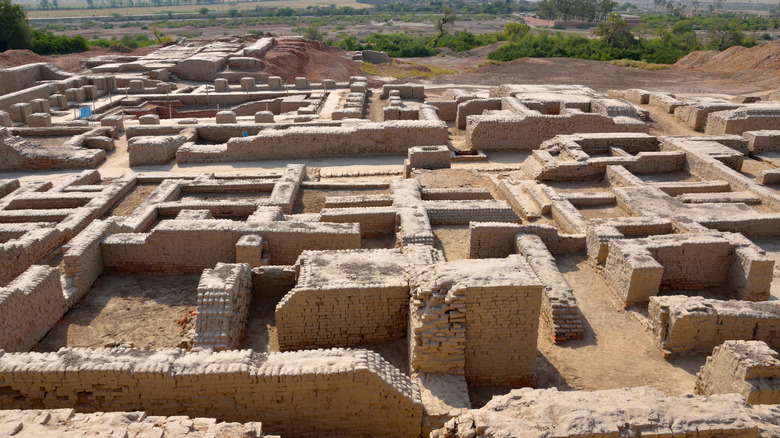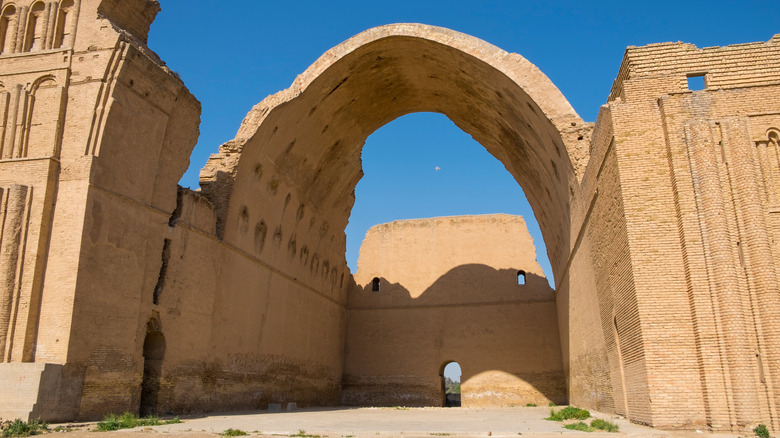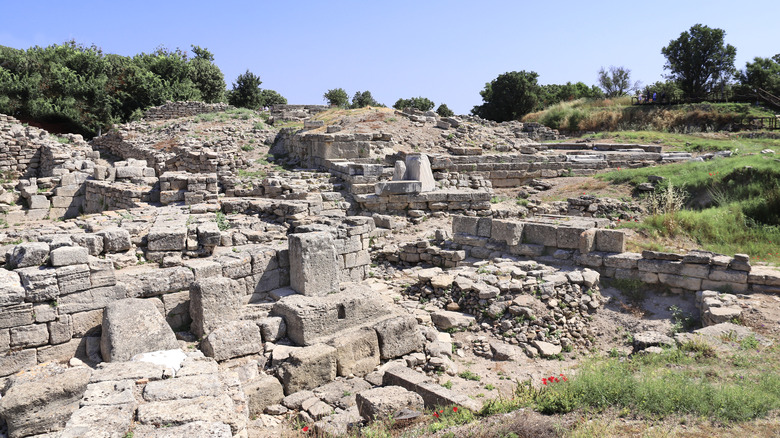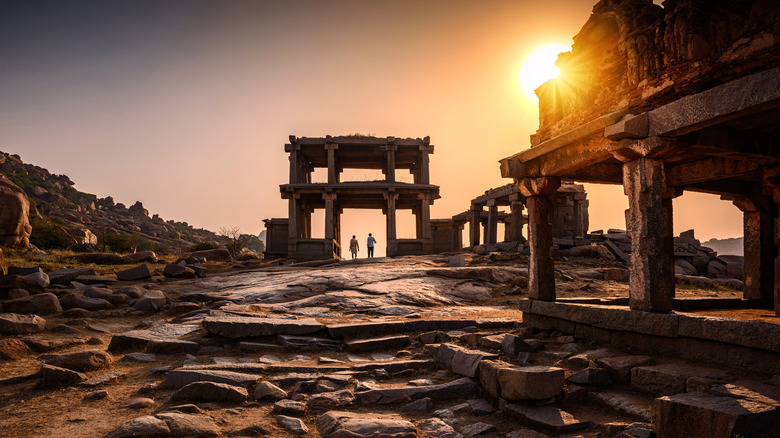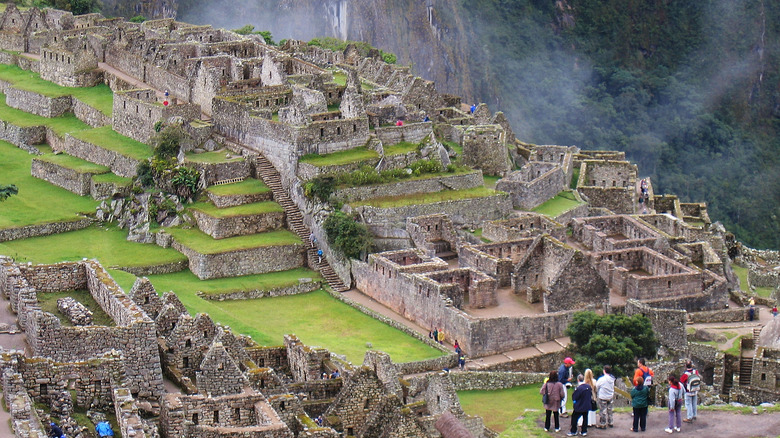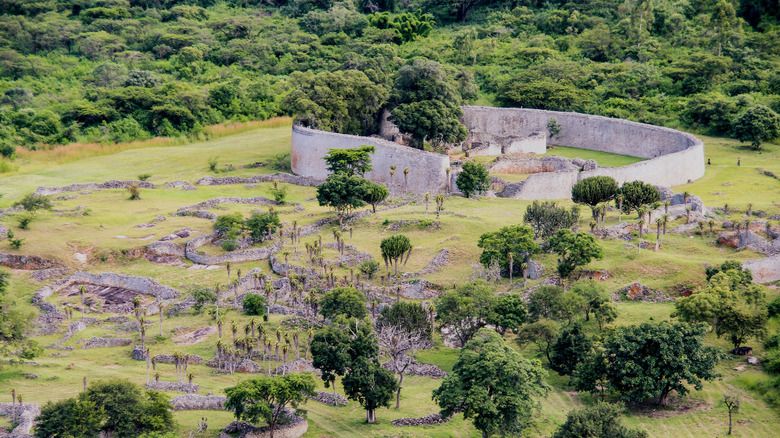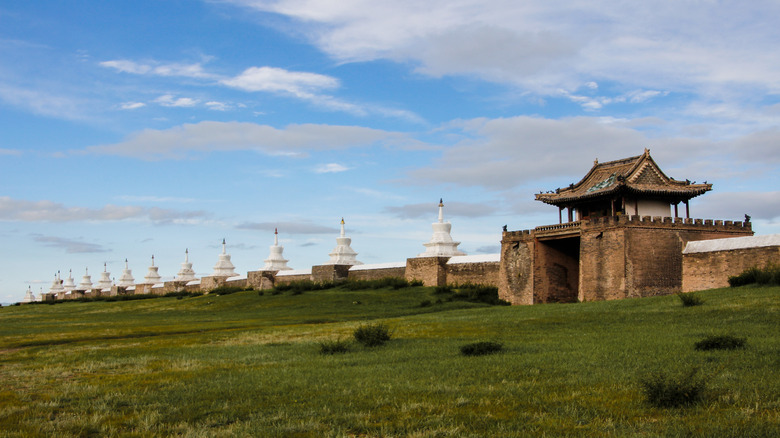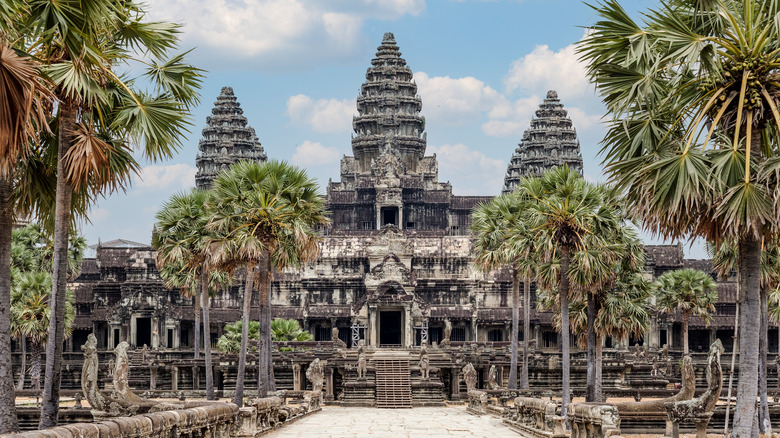The World's Greatest Lost Cities
The great cities of the world today are centers of culture, money, and power. New York, London, Beijing, and Paris seem to be so substantial that it is hard to think that there could be a time without them – barring a zombie apocalypse. Yet throughout time, some of the world's greatest and most powerful cities have disappeared, becoming lost cities.
The reasons a city becomes lost are as diverse as the reasons why a city would be built in the first place. Disaster, such as the destruction of Pompeii by Mount Vesuvius in 79 CE, is one example. Another is general decay such as what happened to the Mosque City of Bagerhat. Still others are lost by conquest or any such combination of unfortunate events that tell the residents it's time to pack up and get out.
What follows is an unranked survey of some of the world's greatest lost cities. All of them were at one point a center of culture and power and all of them fell into the dustbin of history. Yet being in the dustbin isn't entirely tragic – at least all of them are UNESCO World Heritage sites.
Carthage
Rome's greatest rival in its rise to ancient dominance was Carthage. Founded by Phoenician traders in 814 BCE, the World History Encyclopedia describes how this maritime republic grew to become a center of power in the western Mediterranean mainly due to its strategic location as well as its superior port. Its growing power brought it into conflict with the rising power of the Roman Republic resulting in the three Punic Wars (264-146 BCE) of antiquity. (The second, which featured the Carthaginian general Hannibal, is the most famous.) In the end, Carthage lost these wars. The Romans then razed the city and, according to unproven legend, salted the earth so nothing could grow there ever again.
After the Roman takeover, Britannica tells us that the Romans resettled the city so it grew into prominence again. Yet by the time of 3rd century CE, it fell into decline and was sacked by the Vandals in 439 CE. It eventually was conquered by the Arabs in 705 and became lost to history. The ruins of Carthage have been designated a UNESCO World Heritage site and can still be seen by those who visit Tunisia.
Persepolis
The Achaemenid Empire, known to most laypeople as the Persian Empire, was the largest empire of the ancient world. According to the Metropolitan Museum of Art, the empire controlled vast domains from Central Asia to Egypt from 550 to 330 BCE. Naturally, having such an expansive territory brought much wealth and resources. According to the World History Encyclopedia, this allowed King Darius I to start building in 518 BCE a splendid spring and summer capital which was called Parsa, meaning "City of the Persians." To history, this city became known by its Greek name, Persepolis. The city was also somewhat secret, since it was located in a remote area of today's southwest Iran (according to Britannica). This made Persepolis largely unknown to those outside the Persian orbit and reportedly was as safe a place as anywhere in the Achaemenid domains to store the empire's valuables.
The importance of Persepolis was apparently unknown to Alexander the Great, who in 330 BCE took the city and burned it. What remained rapidly fell into decline so that it became lost. It was only in 1931 that serious excavations began at Persepolis. The ruins are colossal in scope and it can only be imagined how much the city must have awed Achaemenid subjects. These ruins continue to yield much valuable information concerning this once great empire.
Babylon
Babylon is one of the best-known cities of the ancient world for good reasons. It was a center of power, culture, and beauty. It was also very old. According to History, the city was founded some 4,000 years ago on the banks of the Euphrates River in today's Iraq. It reached its first peak of power under the famous Amorite king Hammurabi, who ruled the Babylonian Empire from 1792 to 1750 BCE. It was at that time that National Geographic reports that the city became the most populous in Mesopotamia, replacing the Sumerian city of Ur as the greatest.
While Babylon declined after Hammurabi, it was still the greatest city of southern Mesopotamia for centuries. It again grew into global prominence during the Neo-Babylonian Empire. This was the Babylon featured in the Old Testament which included the ruler Nebuchadnezzar II, who enlarged and beautified the city. It was during this time period that the city became known for the Hanging Gardens (though there is debate if they were actually there), as well as the legendary Tower of Babel from biblical tradition. Babylon was also known for its magnificent blue Ishtar Gate which led to the inner center of the city.
Babylon's heyday came to an end in 539 BCE, when the Persian empire builder Cyrus the Great conquered the city. The city, however, remained occupied until after the time of Alexander the Great, when it finally became lost. Excavations, interrupted by the Iraq War, continue to this day.
Tikal
In the jungles of Central America and southern Mexico, mute ruins are testimony of the once great Mayan civilization. One of the mightiest cities of this urbanized society was the city-state of Tikal, which, as described by the World History Encyclopedia, reached its peak between 300 and 850 CE. Containing monumental temples, plazas, ball courts, and written glyphs that have only lately been deciphered, the entire air of Tikal is mysterious and alluring. Tikal at its peak reached a population of about 50,000 people in the outlying areas, and according to Britannica, probably has a core population of about 10,000.
What isn't clear is exactly what happened to Tikal. As pointed out by Smithsonian, the Mayans abandoned the site in the 800s CE with some theorizing that there was an ecological disaster, even a poisoned water supply. What is clear is that is visitors to Guatemala would do well to visit the ruins of this lost city.
Nineveh
In terms of ancient empires, you don't get more brutal than the Assyrians. Britannica tells us that Assyria originated in the 2nd millennium BCE and gradually gained power and strength. It reached a peak under the Neo-Assyrian Empire, which the World History Encyclopedia states expanded out of their core city of Ashur in northern Mesopotamia to build an empire that took over all of Mesopotamia, Egypt, the Levant, and parts of Turkey.
The greatest of all the Assyrian cities was Nineveh which was originally called Ninua. It is unclear when the actual founding of the city occurred although the site had been occupied since at least 6,000 BCE. As the capital of the Neo-Assyrian empire, it was enlarged during the reign of Sennacherib (ruled 722-705 BCE). Featuring gardens, temples, and monumental structures, it may have been the most beautiful city at that time.
However, the Assyrians treated their subjects cruelly through the active use of terror tactics as a tool to keep down rebellion – think Game of Thrones – and had developed a considerable host of enemies. In 612 BCE, a coalition led by the Medes, Persians, and Babylonians successfully overthrew the Assyrians and destroyed Nineveh.
Thebes
Thebes is one of ancient Egypt's greatest cities. National Geographic tells us that the city has some of the most prominent sites of Egyptian civilization. The city was the center of the worship of the god Amun and became a center of worship, especially during the New Kingdom (1550 to 1070 BCE) when it became home to some of the most important temples in Egypt, including the Karnak and the Temple of Luxor. Interestingly, the people of Egypt called Thebes Waset. The name Thebes comes from a Coptic Greek rendering of the Temple of Karnak, as told to us by the World History Encyclopedia.
The city itself was on the east bank of the Nile, but on the west, the Egyptians built a necropolis in the desert called the Valley of the Kings which were the tombs of New Kingdom royalty including such famous figures such as Hatshepsut and Tutankhamen.
Thebes was destroyed by the Assyrians in 666 BCE, who then rebuilt it. The city recovered until it was conquered by the Romans in the 1st century CE. It then became essentially a tourist destination with the silent ruins of a glorious past. Today, the city of Luxor thrives supported by the tourist dollars that this lost city generates.
Mohenjo-Daro
In the 19th century, British travelers discovered ruins along the Indus River Valley in today's Pakistan that they first attributed to the time of Alexander the Great. However, according to the World History Encyclopedia, they were wrong. What they had found was an entirely unknown civilization.
This civilization is called the Indus Valley Civilization. Highly urbanized, they were contemporaries with the Mesopotamian civilization of Sumer and even traded with them. The largest of their cities is Mohenjo-Daro. The name comes from what local people called the "mound of the dead" referring to the bones and artifacts that have been recovered from the site. As to what the people actually called themselves, we may never know since even their writing system remains untranslated.
National Geographic points out the puzzle of the Indus Civilization. The city was large, built with standardized bricks and a regular planned layout. There were public works that controlled water. However, there were no apparent centers of government. There were no monumental temples or tombs. Were the Indus an egalitarian republic? A democracy? The answers are unknown. So too is what happened to them. There is little evidence of conquest which leads some to speculate that climate changes or perhaps a shifting of the river's course brought an end to this civilization. It is likely that the truth about the Indus Valley civilization will remain unknown.
Ctesiphon
The Roman Empire's greatest rival on its eastern flank was the Parthian Empire with its capital at Ctesiphon. As the Metropolitan Museum of Art details, this city along the banks of the Tigris River got going in 140 BCE when the Parthians set up a garrison in the village of Ctesiphon during their conquests of the Seleucids. As the World History Encyclopedia explains, the city became a major Roman objective with the emperor Trajan taking the city in 116 CE. However, this was only temporary. In the ensuing decades, the city was repeatedly sacked by the Romans, first with the destruction of its royal palace in 165 CE. Emperor Septimius Severus again took the city in 198 CE, followed by a forced relocation of a portion of the population. These Roman victories, however, were short-lived as the Parthians were succeeded by the Sasanians who retook Ctesiphon. The city likely started to reach its peak during the reign of Shapur I who ruled from 240 to 270 CE and his successors.
The city managed to survive until it was conquered by the Arabs in 636. It then became deserted with much of its stonework used to build the nearby city of Baghdad. Today, the most prominent marker of this once great capital is the Taq Kasra, or the Arch of Ctesiphon, which is the largest single span of unreinforced brick in the world.
Troy
The most famous city of Greek mythology is Troy. As the primary setting for the action in Homer's Iliad, featuring heroes like Achilles, Hector, and Odysseus in an epic battle. It is for these reasons that Troy had been largely assumed to be a fictional place until the late 19th century. It was then, according to National Geographic, that the former businessman and amateur archeologist, Heinrich Schliemann, convinced of the city's historicity, dug out ruins from the east coast of Turkey at Hisarlik, which he claimed was Troy.
Schliemann was mainly correct. He had, in fact, found Troy, but the city had been occupied for so long that the layer which contained the ruins of the city which would have existed in the Homeric period he chewed right through, and probably destroying priceless antiquities in the process. This layer, called Troy VI, was composed of (as per the World History Encyclopedia) limestone block fortifications for the main citadel that defended a sprawling lower town. The other layers are equally fascinating showing that Troy was occupied until the 300s CE. The emperor Constantine even contemplated building his capital there instead of Constantinople. Apparently, the city became lost after its harbor silted up leading to its abandonment. Troy is now a UNESCO world heritage site. While excavations are still ongoing, it is unlikely that the corpse of Hector or Priam is going to be dug up any time soon.
Vijayanagar
In southern India on the Tungabhadra River lay a tremendous set of ruins called Vijayanagar, or "city of victory." The city, according to Britannica, was also the name of an empire that was founded in 1336 CE. The Hindu-led empire acted as a counter to Muslim expansion in the north of the subcontinent.
Vijayanagar was one of the largest in the world in its day. "The Political Economy of Commerce: Southern India," tells us that the city with its outlying suburbs may have included a population of up to 400,000. The empire, however, came into decline in the 16th century over dynastic struggles. In 1565, the city was destroyed by a coalition of Muslim forces. The ruins of this kingdom are today partly occupied by the village of Hampi. The entire zone is classed a World Heritage site by UNESCO who points out that the remains exemplify Dravidian architecture. In particular, the Vitthla Temple is a highlight of this lost city which was once considered one of the world's most beautiful.
Machu Picchu
High in the Andes Mountains in Peru, Machu Picchu is nowadays one of the country's great tourist attractions. This is because it is one of the most spectacular lost cities in the world. According to the World History Encyclopedia, this city was founded around the year 1450 by Pachacuti Inca Yupanqui, the founder of the Incan Empire.
The purpose of Machu Picchu, which had the capacity for about 1,000 residents, seems to be religious in nature. Its dramatic location high in the mountains provided a highly sacred space for the Incan people. It was meticulously constructed. As National Geographic points out, stone slabs were so well put together that a knife could not be inserted between the blocks. The temples and stonework meld so well into the terrain that the site has been named one of the New Seven Wonders of the World. Machu Picchu, however, was not inhabited for long. After the conquest of the Inca by the Spanish the site was abandoned around the mid-16th century. Machu Picchu then became lost to history until it was rediscovered in 1911 by the American explorer Hiram Bingham. He thought it was another lost Incan city, Vilcabamba, from where the Inca staged a last resistance to the Spaniards. While Bingham was wrong, Machu Picchu was still a good find.
Great Zimbabwe
In southeastern Africa near the modern-day city of Masvingo, there is a ruin that is a testament to the power of the Kingdom of Zimbabwe. As told by National Geographic the people of Zimbabwe established this city, called Great Zimbabwe around the year 900 CE. The trading empire, which dominated commerce in that region of Africa, used its massive wealth to create an impressive city.
The most eye-goggling part is the 32-foot-high circular wall, which was assembled without mortar. This created an 820-foot circumference perimeter of what is called the Great Enclosure. It can only be speculated what it was used for. Some think it was a royal residence while others argue it was for grain storage. In all cases, the Great Enclosure is one of the largest structures of the ancient peoples of sub-Saharan Africa. When studied with the surrounding ruins, experts believe that Great Zimbabwe could have held as many as 20,000 people.
Much is yet unknown about Great Zimbabwe. The Metropolitan Museum of Art points out that it is unclear even how the city was run though it is suspected that elites governed through control of cattle wealth, which was the primary diet. It is also unknown what happened to Great Zimbabwe. The city was abandoned in the 16th century when there were migrations through the area. It is speculated that perhaps exhausted resources and overpopulation were to blame.
Karakorum
The Mongol Empire begun by Ghengis Khan and his nomadic steppe warriors was the largest and arguably the most destructive in history. One of Ghengis's most well-known conquests was against northern China. As explained by Britannica, to administer his wars he selected in 1220 the village of Karakorum on the Upper Orhan River. While Karakorum had been settled since at least 900, the World History Encyclopedia tells us that in 1235, Ghengis's successor, Ogedei, named it the capital of the empire. It was then that it became a city.
The khan constructed a palace and through policy built the city up as a center of trade. Still, Karakorum, being located on the steppe, was a remote place and not suitable for agriculture. This resulted in it importing tons of food to maintain its population of 10,000 to 30,000. While this was not a great population when considering the cities the Mongols conquered, it was still a mighty center of power. Karakorum remained the Mongol capital until 1263 when Kublai Khan moved the capital to Shangdu and then Daidu (modern Beijing). The city fell into swift decline. The final nail in the coffin came in 1388 when the rising Ming Dynasty, which had overthrown the Mongols in China, destroyed the city. Karakorum was then lost until 1899 when its exact location was mapped by Russian archeologists and excavations began.
Angkor
One of the most iconic of lost cities may be the spires of Angkor, found in the forests of Cambodia's Siem Reap province. Angkor, according to the World History Encyclopedia was the capital of the Khmer Empire which lasted from 802 CE to 1431 CE. At its zenith, much of Southeast Asia was under their grasp. Angkor was large. Although the exact population is unknown, it had more land area than any other city in the world. Angkor truly came into prominence, as explained by Britannica, under King Yashovarman I who established a palace at the site. Subsequent rulers poured money into the city building monuments that were testament to their gods' and their own glory.
Perhaps the greatest of Angkor's structures is the awe-inspiring Angkor Wat. This temple was built by King Suryavarman II in the twelfth century as a place for his own remains. After this time, the empire slowly declined and by the 1500s, the city had been abandoned. Recent studies by radar and remote sensing have shown that the city may have fallen victim to ecological disaster with deforestation and land overuse compromising the city's irrigation network.
Theravada Buddhist monks maintained Angkor Wat in the intervening centuries until archeologists, starting in the 19th century, began to uncover for the world knowledge of the secrets of this lost empire.
